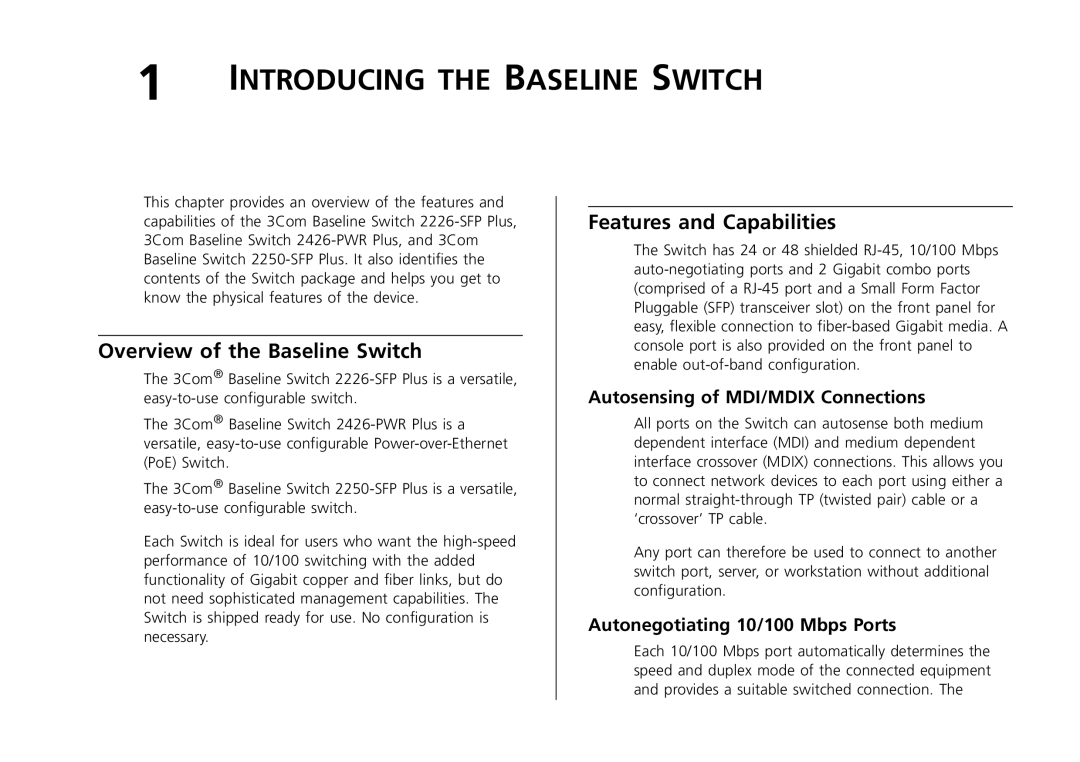
1 | INTRODUCING THE BASELINE SWITCH |
This chapter provides an overview of the features and capabilities of the 3Com Baseline Switch
Overview of the Baseline Switch
The 3Com® Baseline Switch
The 3Com® Baseline Switch
The 3Com® Baseline Switch
Each Switch is ideal for users who want the
Features and Capabilities
The Switch has 24 or 48 shielded
Autosensing of MDI/MDIX Connections
All ports on the Switch can autosense both medium dependent interface (MDI) and medium dependent interface crossover (MDIX) connections. This allows you to connect network devices to each port using either a normal
Any port can therefore be used to connect to another switch port, server, or workstation without additional configuration.
Autonegotiating 10/100 Mbps Ports
Each 10/100 Mbps port automatically determines the speed and duplex mode of the connected equipment and provides a suitable switched connection. The
